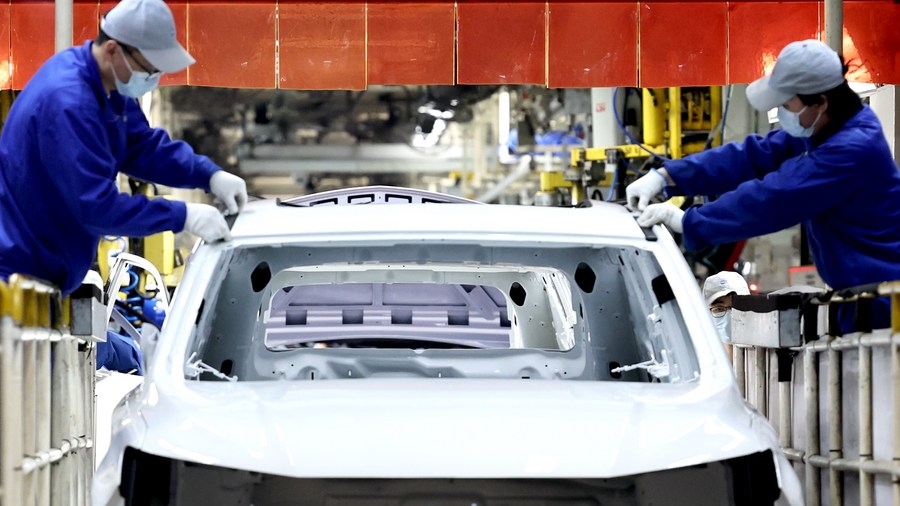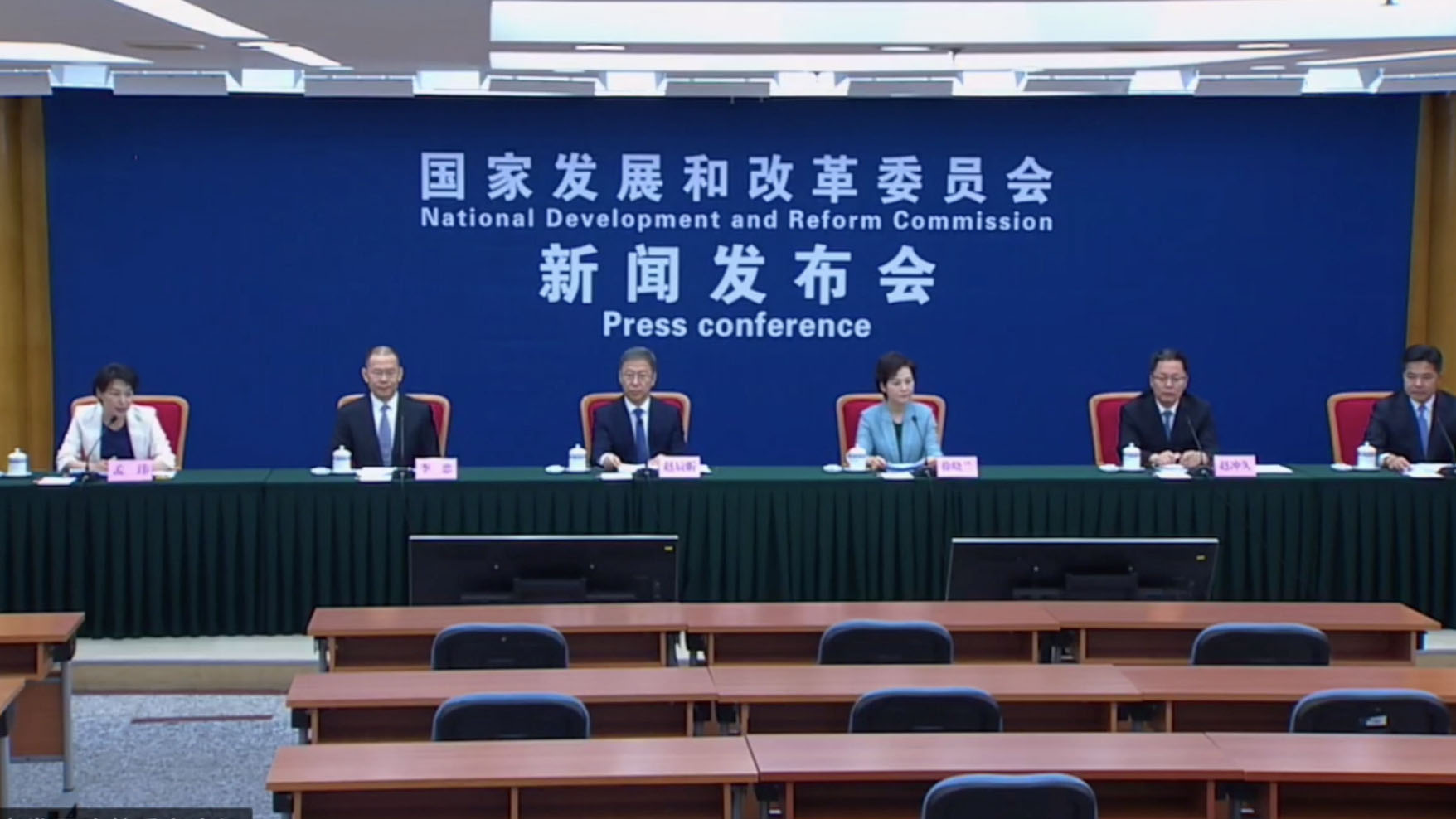
A vehicle is assembled at SAIC Motor Company's Lingang base in Shanghai, east China, April 23, 2022. /Xinhua
A vehicle is assembled at SAIC Motor Company's Lingang base in Shanghai, east China, April 23, 2022. /Xinhua
China's State Council issued a circular on Tuesday detailing a policy package that aims to stabilize the economy amid an elevated risk caused by the COVID-19 pandemic and the Russia-Ukraine conflict.
The package was first announced at a State Council executive meeting last week, now the State Council urged local governments to implement the detailed policy measures.
The package covers six areas, including fiscal, consumption and supply chain, with a total of 33 measures.
01:49

In terms of fiscal policy, China will quicken the issuance of local government special bonds and widen the scope of support. Apart from the nine sectors included on the support list, new infrastructure and new energy projects should be given priority to be supported, the State Council said.
China will speed up the issuance and use of the 3.45 trillion yuan special bond quota issued this year. It has targeted to complete the issuance by the end of June, and work to complete use of the fund by the end of August.
China will improve the financing efficiency via capital markets and facilitate the normalization of initial public offerings and refinancing. It will support mainland companies to list in Hong Kong and promote the overseas listing of qualified platform enterprises.
To boost investment and consumption, China will support the healthy development of the platform economy and utilize the development of platform enterprises to drive relief for small, medium and micro-enterprises. The State Council also acknowledged the role of the sector in stabilizing employment.
Boost car sales
No new vehicle purchase restrictions shall be issued, and regions that have implemented purchase restrictions should gradually relax those measures, according to the circular.
Automobile sales account for 10 percent of China's total retail sales, which serves as a key sector to expand domestic demand and stimulate consumption, said Sheng Qiuping, vice minister of commerce, at a news conference following the release of the circular.
In line with the State Council circular, China will slash the purchase tax by half for passenger cars under 300,000 yuan (about $45,040) with engine displacements within 2 liters purchased between June 1 and December 31 this year, said a notice jointly released by the Ministry of Finance and the State Tax Administration on Tuesday.
Noting that China's passenger car sales plummeted by more than a third in April, Sheng said that the Ministry of Commerce will work with relevant departments to issue detailed implementation measures to boost automobile sales and will focus on increasing the sales of new cars and revitalizing the market of second-hand cars.
The department will also work to promote new energy vehicle sales in the countryside and actively support the construction of charging facilities, Sheng added.
Metropolises like Shanghai and Shenzhen have increased their quotas of registration plates. Provincial-level regions like Jilin and Chongqing introduced measures including subsidizing new car purchases and facilitating entry to urban areas for pick-up trucks.
Defer social-insurance payments for more pandemic-hit sectors
The package also includes deferring social security payments of enterprises hit hard by the pandemic, as the latest move to alleviate the financial burden on certain industries..
Firms in 17 pandemic-hit industries, including auto manufacturing and general machinery manufacturing, will be allowed to defer the corporate shares of social-insurance payments, according to a statement jointly released by four organs, including the Ministry of Human Resources.
Previously, the country rolled out payment deferrals for five sectors that were more exposed to the pandemic, such as catering, retail and tourism, to help such enterprises navigate the crisis.
With the repeated emphasis on implementing the economic stabilization policies and the easing of COVID-19 control measures, the recovery trend is on track to last, said Wang Jingwen, director of macro-research with China Minsheng Bank.
The benchmark Shanghai Composite Index jumped 1.19 percent, the Shenzhen Component Index climbed 1.92 percent, and the ChiNext Index gained 2.33 percent by market close on Tuesday.
Read more:
China leverages targeted policies to bolster property market
China cuts key interest rate by record amount to boost economy
Premier Li Keqiang requires detailed policies to stabilize economy
(With inputs from Xinhua)

